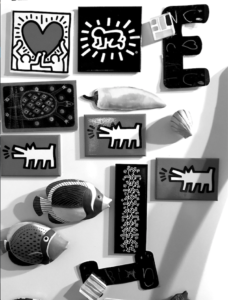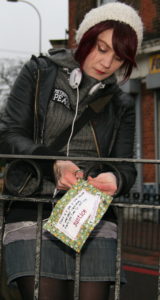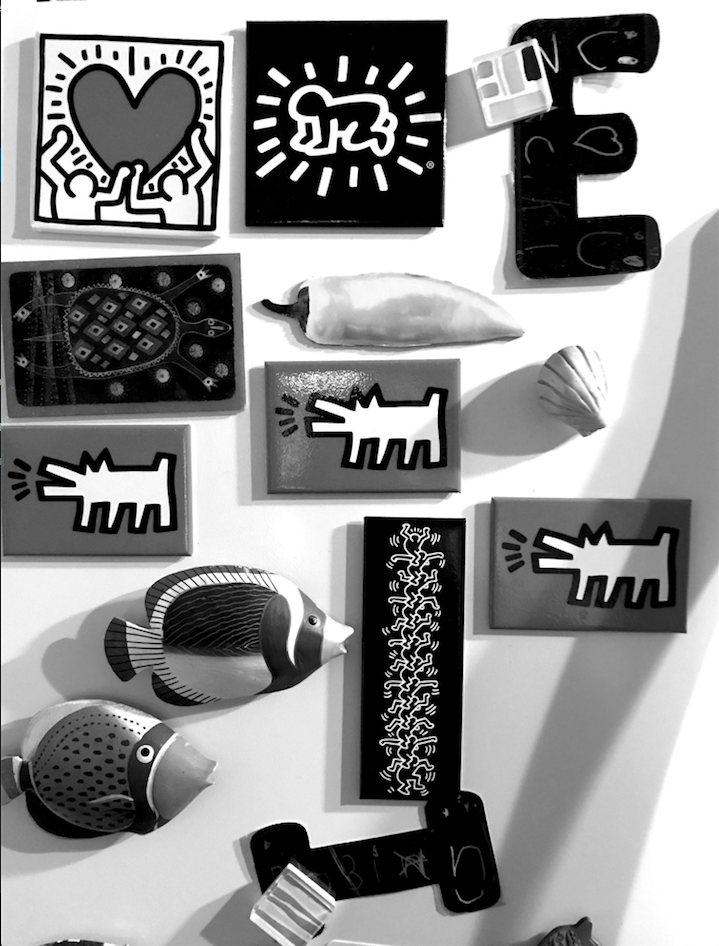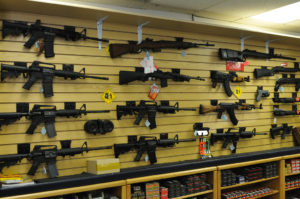One question has plagued my thoughts over the past few weeks: can I be an introvert and an activist? I am awed and humbled as I watch my peers and students across the nation band together to demand that their voices be heard in the national movement for gun control. But as I watch my friends yell through megaphones and walk out of school to protest at City Hall, something in my brain always tells me I could never do that.
After the 2016 election I vowed to do something to disrupt my own routine and make a difference. Throughout the fall, I had stayed home as my mom and sister went off toHillary’s San Francisco headquarters to make calls; as someone who gets nervous ordering take-out from the same Thai restaurant every week, the idea of cold-calling random strangers sent shivers of trepidation down my spine. But as I watched the election results roll in, my one regret was that I had not faced my fears. Maybe, I thought, maybe I could have done something to make it turn out different.
Participating in the walk out two days after the election gave me purpose. I can do this! I thought to myself, my mind humming with all the different organizations I would volunteer for or campaigns for which I would intern. I would change the system, change the results.
 But by the time the Women’s March rolled around, I had lost both steam and enthusiasm. Marching for hours in the rain surrounded by a suffocating throng of chanting people in parkas overwhelmed me, and as I rode home on Muni, slouched and sopping in my seat, I figured I had done enough talking and yelling for one week. I had only been an “activist” for a couple days and I was already exhausted.
But by the time the Women’s March rolled around, I had lost both steam and enthusiasm. Marching for hours in the rain surrounded by a suffocating throng of chanting people in parkas overwhelmed me, and as I rode home on Muni, slouched and sopping in my seat, I figured I had done enough talking and yelling for one week. I had only been an “activist” for a couple days and I was already exhausted.
I never followed through with any of my big plans. I had set my sights on lofty goals, a million things I would never do. Not only was I reluctant to do anything that required meeting new people or talking to strangers, none of the activities I had deemed a worthy cause were things that actually interested me.
When I heard the students at Marjory Stoneman Douglas High School calling for students across the nation to join together to demand for increased gun control, I knew that this time I actually had to do something. I had a second chance and I didn’t want to waste it watching others take action. I had accepted the fact that I am probably never going to be the person holding the megaphone and directing protesters, but that doesn’t mean I couldn’t make a difference. The question was how I was going to do that. So when I heard about Sarah Corbett’s new book, How to be a Craftivist: the Art of Gentle Protest, I picked a copy up right away.
 Sarah Corbett grew up in a low-income Liverpool neighborhood in the 80s and was involved in activism from the age of three. As a kid she was helping residents of her neighborhood save good housing from demolition. Corbett maintained an interest in activism throughout her schooling, and upon graduation from university she worked for seven years as a “professional activist and movement builder.”
Sarah Corbett grew up in a low-income Liverpool neighborhood in the 80s and was involved in activism from the age of three. As a kid she was helping residents of her neighborhood save good housing from demolition. Corbett maintained an interest in activism throughout her schooling, and upon graduation from university she worked for seven years as a “professional activist and movement builder.”
In 2008, Corbett suddenly began to question what had been her lifelong passion. She writes, “I felt like a burnt out activist. I’m an introvert; so going to marches and meetings drained me. I didn’t like shouting, demonizing people, or telling people what to do, and I didn’t feel as though I fitted into some groups.” By the end of the introduction, I was thoroughly intrigued to learn her new approach to activism, as well as relieved to find that I wasn’t the only one having these feelings.
When Corbett was feeling burnt out, she turned back to her passion: needlework. Corbett’s activism primarily manifests in needlework, but she acknowledges that everyone has their own approach to creating art. Crafting helped her restore her love of protest and get back in tune with herself, and she quickly realized that she could use the skill as a new form of activism.
During the introduction of the book, Corbett describes one of the first times she used craft as a form of activism: “My local politician had been ignoring my petitions and requests to take particular actions against injustice, so I hand-embroidered a message on to a handkerchief, asking her not to blow her chance of making a positive difference in her powerful position. I gave it to her as a gift to show that I wanted to encourage, support, and help her tackle injustices as a critical friend not to fight her as an aggressive enemy. It worked.” This discovery lead her to actively look for a connection between craft and activism, leading her to the term craftivism. While not a fan of the term myself, the beauty lies in the act, not in the jargon.
In How to be a Craftivist, Corbett clearly and thoughtfully details how craft can be successfully used as a form of protest, benefitting both yourself and the people around you. The book is broken up into three sections: “Definitions,” “Power in the Process,” and “Power in the Product.” “Definitions” equips the readers with all the necessary terms to approach the rest of the book and carefully explains what craftivism is and how it intersects with other forms of activism. “Power in the Process” focuses on the crafter’s mindset and healing through the act of making, while “Power in the Product” highlights actual techniques, styles, and things to keep in mind when creating and installing a form of protest through craft. Each of these sections has wonderful chapters like “Mindful Activism” and “Compete with Beauty.”
Not only did I find Corbett’s slow moving, meditative, and reflective approach to activism refreshing, but the book itself is as clear as water. Within each chapter Corbett breaks concepts into small subsections that flow from one to the other, often tying in her own experiences or the experiences of other activists.
I didn’t come away from the book with the ambition of becoming a needleworker, but I did gain a better understanding of how to utilize my own passions as a form of activism. On top of that, it gave me confidence that there isn’t only one kind of activist and that quiet, gentle forms of activism can be just as important and meaningful as huge campaigns and marches. How to be a Craftivist instilled in me the tools and mindset I needed to find a form of activism I cannot only realistically maintain, but that I will also enjoy.
How to be a Craftivist: the Art of Gentle Protest is an insightful and illuminating read for any introvert who feels alienated or intimidated by activism but wants to make a difference. If you don’t have time to read the nearly 300 page book, I recommend watching Sarah Corbett’s Tedtalk “Activism Needs Introverts,” or for those more intrigued by the act of craftivism than the meaning, history, and approach to it, give A Little Book of Craftivism, Corbett’s first book, a read.
As I approach the gun control movement, I need to remind myself that one big gesture, like the March for Our Lives, is important, but that many smaller gestures maintained over a period of time can make a just as big, if not an even bigger, difference. The greatest changes are the result of unity so we must all band together, extroverts and introverts alike. Protest doesn’t come in one form, so find what you love to do and figure out how to turn it into activism. This is the most excited I’ve ever been to be an activist.






